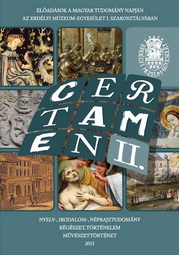A marosújvári kastély két arca: a 18. és a 19. századi állapot
Two Appearances of the Country House at Ocna Mureș: its States in the 18th and 19th Centuries
Author(s): Beáta BordásSubject(s): Cultural history
Published by: Erdélyi Múzeum-Egyesület
Keywords: architectural history; Baroque country house; Romantic historicism; Antal Kagerbauer; count Imre Mikó; Balázs Debreczeni; patronage; cast iron railings
Summary/Abstract: The country house at Marosújvár may be considered the most important Neo-Gothic monument of this architectural genre in Transylvania, due to the high quality of the details found on the façades and interior furnishing. The actual state of the country house was elaborated during the historicist re-building of an antecedent Baroque residence (from 1742), starting from 1856. The commissioner of the works was Count Imre Mikó (1805–1876), an outstanding character of the Transylvanian public life. The country house occupies an accentuated role both in the period’s architecture and in the oeuvre of architect Antal Kagerbauer (1814–1872), and this paper also presents the patronage relationship between Mikó and the architect, which was fruitful but not exempt from dispute. I produced several new findings referring to the building history of the country house, in addition to those described by art historian Margit B. Nagy, and I delimited its construction phases. The state of the Baroque country house, which preceded the rebuilding in Romantic style, is unknown in the scholarly literature, thus I presented also this construction phase, based on the inventories and graphic representations. The building is in a desolated state, which motivated its detailed description of the most important architectural and ornamental details (e.g. the cast iron railings of the terraces and interior stairs), which were destroyed recently.
Journal: Certamen
- Issue Year: 2015
- Issue No: II
- Page Range: 421-442
- Page Count: 22
- Language: Hungarian

